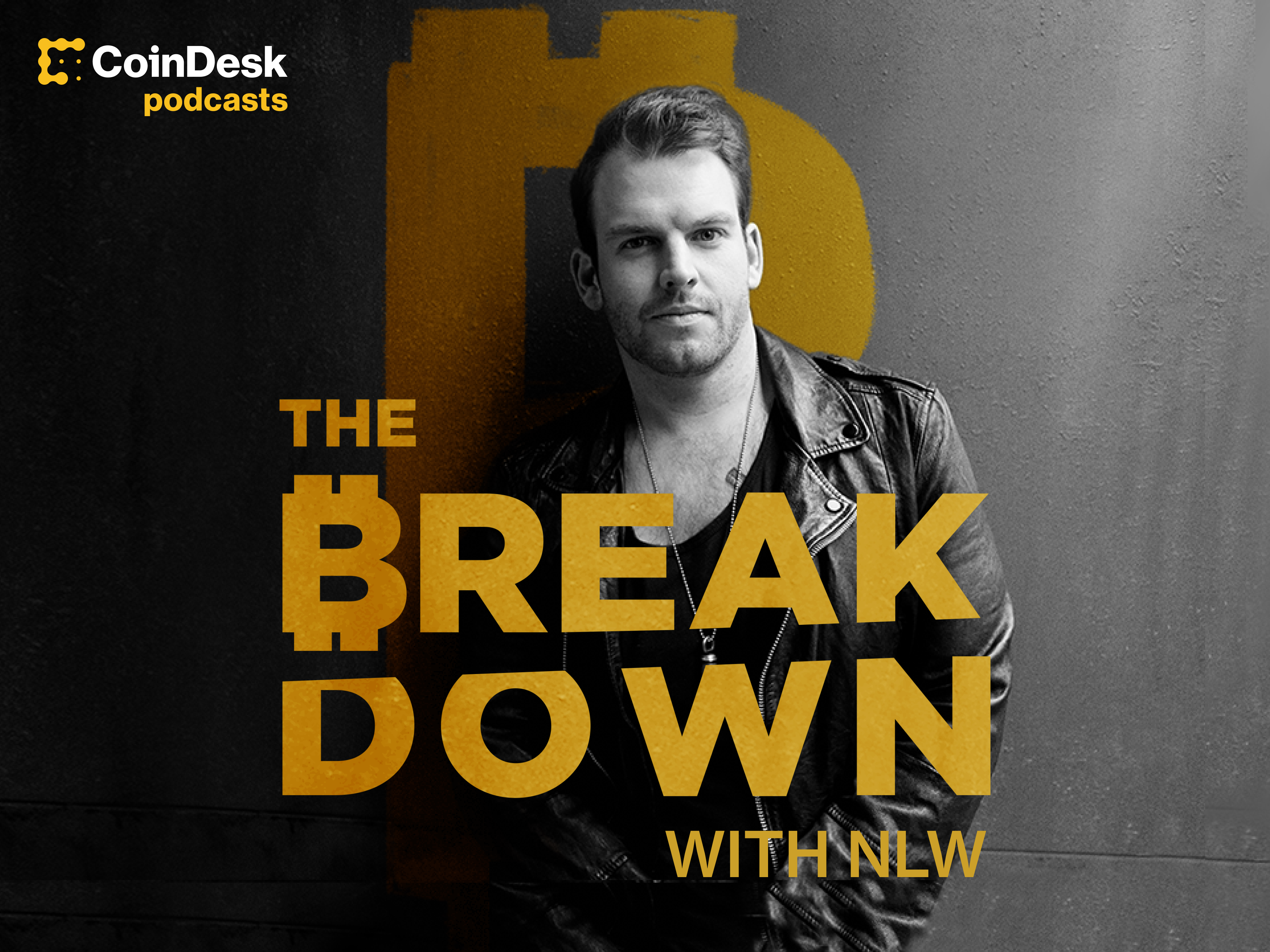The originator of the “Great Monetary Inflation” thesis that helped jumpstart this bull run weighs in on bitcoin and macro.
This episode is sponsored by Nexo.io and Bitstamp.
Just when it seemed like the “Economic Empowerment” narrative coming out of El Salvador was poised to overtake the inflation/digital gold narrative, one of that viewpoint’s strongest advocates was back on CNBC today. Hedge fund legend Paul Tudor Jones discussed why he doesn’t think inflation is transitory, why he recommends 5% in bitcoin and why the outcomes in the market will be based largely on what the Fed does next.
Also on this episode:
- Elon Musk says Tesla will accept BTC as payment again once renewable mining hits 50%
- Michael Saylor and MicroStrategy sell $500 million in bonds to buy more BTC
- More shockwaves from El Salvador’s landmark bitcoin law
See also: Paul Tudor Jones Could Go ‘All In’ on Inflation Trades, Wants 5% Bitcoin Allocation
Image credit: Kevin Mazur/Getty Images Entertainment
Transcript
What's going on guys, it is Monday, June 14, and today I'm going to cover a few topics. If I had to sum up the vibe here at the beginning of the week, it's the bulls trying to mount a comeback. As you've seen over the past few weeks, the mood had turned pretty significantly bearish, people were starting to ask whether we were settling in for a new crypto winter. At the beginning of the last week, I talked about the inflation and digital gold narrative that had set the overarching framework for the previous year. This is the force that drove new market participants in, fueling the bull market that pushed bitcoin from 10k all the way to 60k+. Then again, bitcoin hasn't been at 60k since early April. Since then, the bull market has felt the wind leave its sails.
I speculated last week that the digital gold institutional momentum had largely stopped thanks to a combination of two things. First, a macro environment which was largely waiting to see what happens next, with rising inflation and expectations that the Fed would feel pressure to unwind monetary support and low interest rates; and two, a nearly endless barrage of FUD, particularly around the environment and China. Because of that, I wondered if bitcoin needed a new macro-driving narrative to bring excitement back to the space. That seemed to happen with the bill in El Salvador to make bitcoin legal tender. And if you need a sense of that new narrative that started to emerge, go check out Saturday's episode on "Bitcoin as Economic Empowerment." However, just when I was ready to count out the "institutional Fed has gone crazy. Maybe this bitcoin thing isn't so crazy” digital gold narrative, here comes Paul Tudor Jones himself, the "Great Monetary Inflation" thesis writer storming back to re-up the message. Here's a clip from his conversation with Andrew Ross Sorkin on CNBC this morning.
Paul Tudor Jones
Listen, I like bitcoin. Bitcoin is math. And math has been around for thousands of years. Two plus two is going to equal four and it will for the next 2000 years, so I like the idea of investing in something that's reliable, consistent, honest, and 100% certain. So, bitcoin has appealed to me, because it's a way for me to invest, in certainty where again, I look at the difference between the Fed of 2013 to 2021. I'll look at the difference between Trump and Biden. Do I want to have a say, and that same reliability and consistency of human nature? And the linear nature of human nature, which we know is anything but that.
Andrew Ross Sorkin
You like bitcoin at these prices?
Paul Tudor Jones
I Like bitcoin, the only thing that I know for certain is I want to have 5% in gold, 5% in bitcoin, 5% in cash, 5% in commodities at this point in time. I don't know what I want to do with the other 80%. I want to wait and see what the Feds are gonna do, because what they do will have a big impact.
NLW
A few things to pull out of this. First, "bitcoin is math. And math has been around for thousands of years", is a great rejoinder for people like the gold folks, who say that bitcoin has no history as a store of value. It's also a good, simple line of description for those who are into fundamentals, you know, supply and demand, who might get hooked on the supply side of bitcoin's story. Second, this is a strong reminder that the thing that got those institutions interested in the first place, the extreme variability, and just the extremes of monetary policy, is every bit as true today as it was a year ago. You have to think that the NYDIGs of the world are working double time to reinforce this perspective with the institutions who are hovering on the edge of a bet. There's also something to be said for imitatable allocations. If you cruise around bitcoin Twitter, you'll find a fair number of people saying, "Only 5%? Clearly you're not orange pilled all the way." God bless. But think about it from the standpoint of some big institutional allocator. What's more influential? What's more copyable? Is it Saylor taking on another half billion in debt to buy more bitcoin, more than 100% of their reserves, or Paul Tudor Jones saying 5%?
It's not that Saylor's type of conviction isn't important. We discussed here a few weeks ago how part of what got Paul Tudor Jones in in the first place, is that 86% of HODLers didn't sell when the market crashed around COVID-19 shutdowns. In fact, that's the argument that he used to Stan Druckenmiller to get him involved. But when it comes to seeing an investment approach that one can take on in their own portfolio, or the portfolio of the funds or treasuries they manage, something like a 5% allocation is a whole lot more doable. By the way, for those keeping track, the discussion of what the right percentage hedges has gone up a lot over the last couple years. Remember Chamath's 1% for "schmuck insurance?" PTJ just 5x that.
Now, there was one section that many bitcoiners cringed at. When asked about bitcoin mining, Jones said that if he were king, he would stop all bitcoin mining and make everyone figure it out at the supply level. At the same time, he did point out that gold mining consumes more energy but to be honest, it felt like a canned answer where he had to make nice with environmental concerns. I think that take would be bolstered by the fact that he quickly changed topics back to the Fed without allowing for a follow up question. Then again, he might have just made his investment thesis in bitcoin, stopped caring too much about the specifics of network security, and moved on. Either way, I pointed out just as a reminder to always take everyone for their full complexity, lest we lionize and valorize too much.
Meanwhile, as all of this was happening, bitcoin was charging back up over $40,000. Was this driven by Paul Tudor Jones? He might have provided a bit of momentum, but there were other factors that people cited as well. Speaking of lionizing an over valorizing people, Elon was back yesterday. When Cointelegraph published an article where someone accused him of pumping and dumping, he responded to the tweet saying, "This is inaccurate. Tesla only sold about 10% of holdings to confirm BTC could be liquidated easily without moving the market. When there's confirmation of reasonable, about 50%, clean energy usage by miners, with positive future trend, Tesla will resume allowing bitcoin transactions."
So at the risk of giving Elon more airtime, I actually think this is worth noting. In general, people respond to, and frankly need, simple heuristics. Heuristics being shorthand for how to think about the world around them, particularly in domains that they don't know that much about. Musk, aided by Saylor, have now set up an infrastructure for credible bitcoin energy reporting, as well as a, so far, unofficial target. What I mean by credible in this case is that the one thing the bitcoin mining council participants were clear on, was that the only thing they fully agreed to was better reporting standards around energy consumption
Reporting Standards that well, starting in North America, could be easily exploited or voluntarily adopted by other miners around the world. Get a big enough percentage of hash power, all with voluntary disclosures of energy mix, based on shared standards, and all of a sudden we're no longer in a world where energy debates revolve around cherry picking one study versus another's estimates of the global energy mix. You have the gold standard, pun intended, of information on how much bitcoin is mined with what type of energy. Slap on top of that a "Hey, we did it" number like 50%. And what you're setting up for is a credible, clean energy narrative for bitcoin.
To be clear, when I say credible, what I actually should say is believable. Particularly to the market and other people who don't care much one way or another, believability by the middle, not the people who hate bitcoin no matter what, not the people who love bitcoin, no matter what, is the metric of success, at least in this estimation. Let's keep seeing how it plays out, but I think the approach is getting clear.
Speaking of Michael Saylor, MicroStrategy has just completed another debt sale with which it intends to buy bitcoin. Originally, it set out to sell 400 million in debt, they ended up selling 500 million, of which they intend to buy bitcoin with about 488 million. If you're looking for other factors that could be pressuring the market up right now, that's one to watch. Still, to me, Saylor's most interesting tweeted the weekend was about Lebanon. After the latest crash, the Lebanese pound has seen a roughly 90% decrease in its purchasing power since breaking its peg against the dollar a couple years ago. I did a primer on this in April of last year, and it seems like it's about time for an update.
In other parts of the market, optimism is growing. Taproot, one of the most significant upgrades to bitcoin in years, that has implications for privacy, scalability, security, and more, has above the 90% threshold of miner signaling support for it to move into its activation phase. In the wake of El Salvador's moves last week, the President of Tanzania has told her central bank to start preparing for the broader adoption of cryptocurrency in the world, and to look out for opportunities around economic development. Mark Cuban is using blog posts that read like open letters to urge regulators to get behind decentralized finance, which he called, "the next great growth engine that this country needs." All in all, kind of a heck of a way to start the week. I'm excited to see what happens next and I appreciate you hanging out as that happens. Until tomorrow guys, be safe and take care of each other. Peace!










